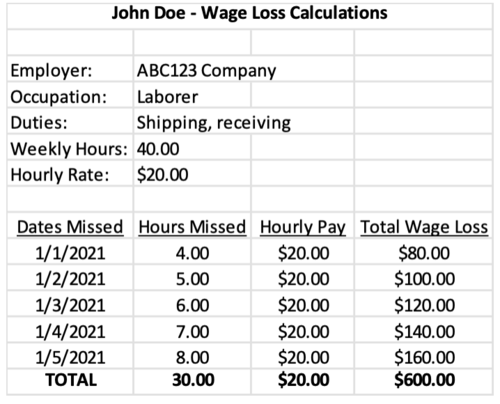1 min read

1 min read
Aaron Ferguson Law Jan 3, 2022 12:00:00 AM

In our previous blogs, we discussed in summary time missed from work after an accident and compensation for lost wages. As discussed previously, calculating your wage loss is fairly straightforward if you are an employee with a set schedule and set pay rate. Take the following for example:

In the example above, we assume that John Doe works 8 hours per day and 5 days per week, earning $20.00 for each hour that he works. John has also missed a total of 30 hours for the dates of January 1, 2021 to January 5, 2021. If we multiply the hours John missed with his hourly rate, we get a total of $600 in wage loss. (Keep in mind that even though John has incurred $600 in lost wages for the week, there may be limitations on what he can be compensated for).
However, things can get a bit more complicated if you own your own business and consider yourself as self-employed. In general, calculating your wage loss as a self-employed individual follows the same methods as any other employee since the dates missed and hours missed are determined based on your restrictions and timesheets. The difference though is determining your hourly, monthly, or even yearly pay since it will likely vary per day, month, and even year. In these situations, it may be best to rely on averages from prior statements such as monthly earnings for the six months prior to your injury, or tax returns from two years prior.
Reimbursement for time missed from work is one of the most important aspects for those who are injured. If you have been injured, please reach out to our experienced attorneys at Aaron Ferguson Law for a free consultation.
